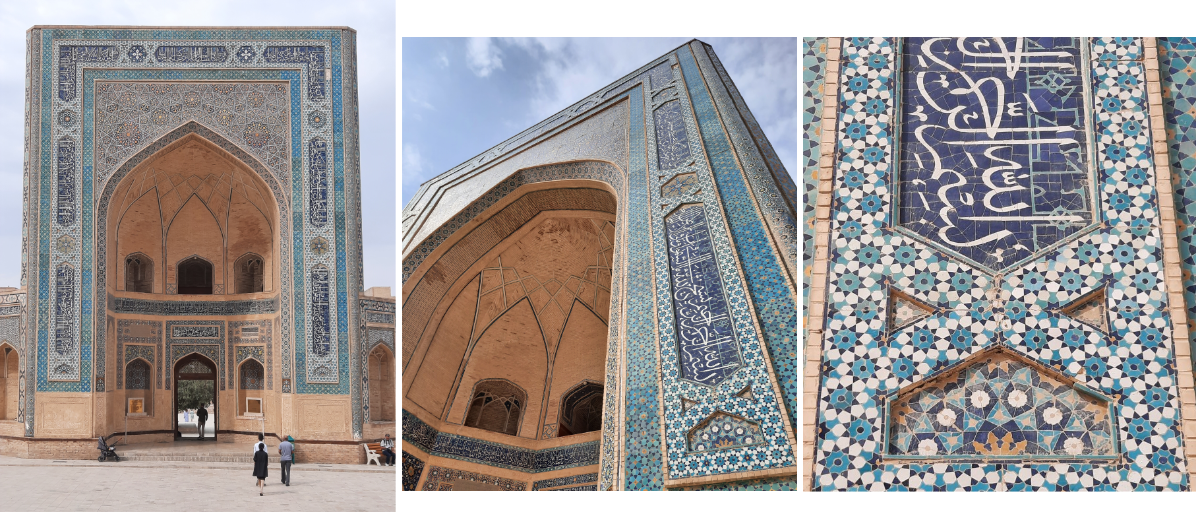Kalon mosque geometric pattern along the side - gp
Kalon mosque (12th century, rebuilt early 16th century)
The Kalon mosque of Bukhara is one of the largest mosques in Central-Asia. It is opposed to the Mir-i-Arab Madrassa, forming together the Po-i-Kaylon complex.
Detailed information you can find at orientalarchitecture.com.
The mosque is built as Friday mosque with a capacity of 12 000 people to gather the whole male population of Bukhara.
pishtak
The rectangular frontface of an iwan is called pishtaq. Along the side of the pishtaq of the eastern iwana calligraphic text is written in separate parts. These parts have got a frame with an interesting pattern.

surrounding frame
Between the different text sections a hexagon in placed, surrounded by equilateral triangles and in the surrounding frame they play a signifcant part.
The frame is filled by horizontal rows of enneagons, defining 9-3 stars (blue in the applet). But along the edge of the sections, the hexagons and the triangles 6-pointed stars are placed (yellow) built up out of kites (orange).
Notice that the centers of the enneagons are colored in blue, while the centers of the 6-pointed stars are colored orange, so one can distinguish both.
the filling of the hexagons and triangles
The haxagons that separate the parts of the text (the lower hexagon is reduced to the half), are filled by a central dodecagon (green), defining a 12-pointed star, 1/3 parts of an enneagon in the corners (light blue), defining 9-pointed stars, 1/2 parts of e hexagon (purple), defining 6-pointed stars, and irregular pentagons (dark blue) between the central dodecagon and the polygons along the edge.
The little triangles around the hexagons are filled by a white flower with three blue leaves.